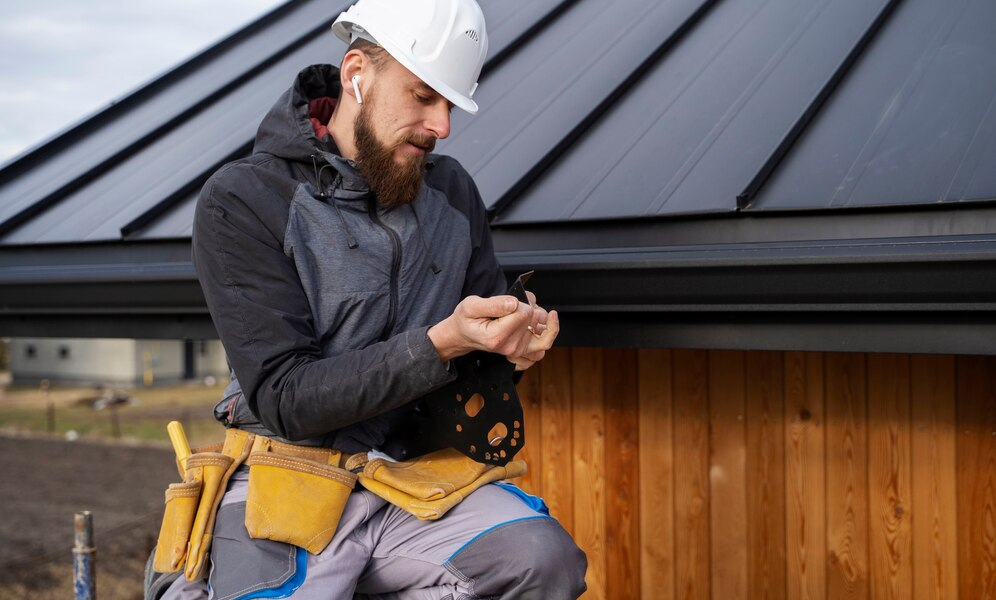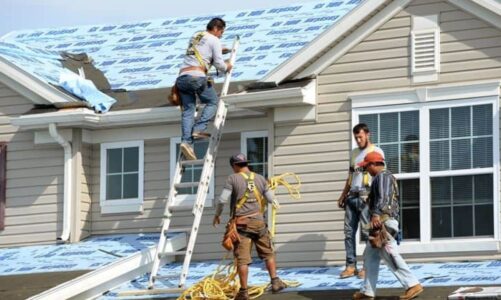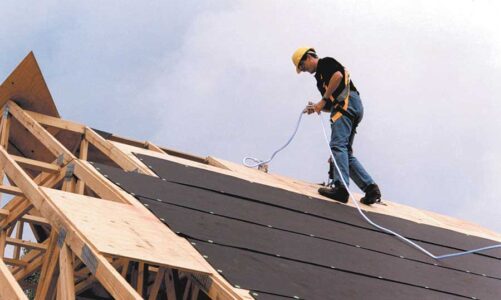A well-maintained roof is crucial for the safety, energy efficiency, and overall value of your home. Over time, wear and tear, weather damage, and aging materials may necessitate a residential roofing system replacement. This guide covers everything you need to know about roof replacement, from signs indicating the need for a new roof to the steps involved in the process.
Signs You Need a Roof Replacement
1. Age of the Roof
One of the primary indicators that you might need a roof replacement is the age of your roof. Most residential roofing systems last between 20 to 25 years. If your roof is approaching or has surpassed this age, it’s wise to start considering a replacement.
2. Visible Damage
Inspect your roof for visible damage. Look for missing, cracked, or curling shingles, as these are clear signs that your roof’s integrity is compromised. Additionally, check for granules in your gutters, which indicate shingle deterioration.
3. Leaks and Water Damage
Water stains on your ceiling or walls, mold growth, and damp spots in the attic are signs of leaks. Persistent leaks necessitate a roof replacement to prevent further structural damage.
4. Sagging Roof Deck
A sagging roof deck is a serious issue that indicates structural damage. This problem requires immediate attention and typically results in a full roof replacement.
5. High Energy Bills
A well-insulated roof helps maintain indoor temperatures. If you notice a sudden spike in your energy bills, it could be due to a failing roof that no longer provides adequate insulation.
Steps Involved in a Residential Roofing System Replacement
1. Initial Inspection and Estimate
The first step in a residential roofing system replacement is to hire a professional roofing contractor for an inspection. They will assess the condition of your roof, identify any issues, and provide an estimate for the replacement.
2. Choosing Materials
Selecting the right materials is crucial for the longevity and performance of your new roof. Popular options include asphalt shingles, metal roofing, wood shakes, and slate. Each material has its own benefits and cost considerations.
3. Obtaining Permits
Depending on your location, you may need permits for roof replacement. Your contractor will typically handle this process, ensuring all work complies with local building codes.
4. Removing the Old Roof
The next step involves removing the existing roofing materials. This process includes stripping away old shingles, underlayment, and any damaged decking. Proper disposal of these materials is essential for safety and environmental considerations.
5. Inspecting and Repairing the Deck
Once the old roof is removed, the underlying deck is inspected for any damage or rot. Any issues found are repaired to ensure a solid foundation for the new roof.
6. Installing the New Roof
The installation of the new roof begins with laying down an underlayment, which acts as a moisture barrier. Following this, the chosen roofing materials are installed according to manufacturer specifications and local building codes. Proper installation is critical to ensure the longevity and performance of your roof.
7. Final Inspection and Cleanup
After the installation is complete, a final inspection is conducted to ensure everything meets the required standards. The cleanup process involves removing any debris from your property and ensuring your home is left in pristine condition.
Benefits of Roof Replacement
1. Enhanced Curb Appeal
A new roof significantly enhances the appearance of your home, boosting its curb appeal. Modern roofing materials come in a variety of colors and styles, allowing you to choose an option that complements your home’s architecture.
2. Increased Property Value
A residential roofing system replacement can increase your property’s value. Potential buyers are more likely to invest in a home with a new, high-quality roof, knowing they won’t have to deal with roof issues for many years.
3. Improved Energy Efficiency
New roofing materials often provide better insulation, reducing your energy consumption and lowering your utility bills. This improvement is particularly noticeable with energy-efficient options like metal roofing and cool roofs.
4. Enhanced Safety
A new roof eliminates the risk of leaks, mold growth, and structural damage, ensuring the safety of your home and its occupants. It also protects your home from severe weather conditions, providing peace of mind.
Conclusion
Undertaking a residential roofing system replacement is a significant investment, but the benefits far outweigh the costs. From improved safety and energy efficiency to increased property value and curb appeal, a new roof offers numerous advantages. By understanding the signs that indicate the need for a roof replacement and the steps involved in the process, you can make informed decisions and ensure the longevity and performance of your home’s roofing system. Always work with a reputable roofing contractor to achieve the best results and enjoy the peace of mind that comes with a job well done.



